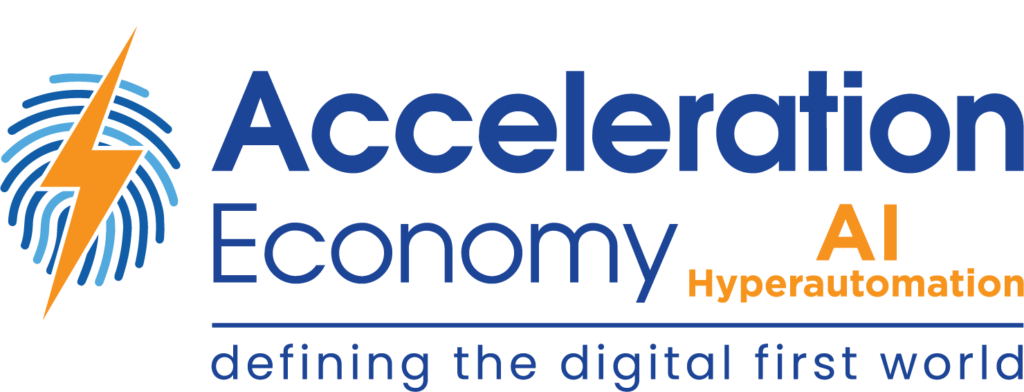Artificial intelligence (AI) is being applied across nearly all business functions in nearly all industry verticals. If you’ve been following the Acceleration Economy AI channel, you’ll be very familiar with mission-critical applications including cloud ERP (enterprise resource planning) integration, predictive management software, and next-generation analytics. But it’s important that we not overlook another core business function that AI is revolutionizing: customer experience, or CX.
Of course, crafting a more engaging and personalized customer experience is only possible because of other functions like user analytics, next-generation CRMs (customer relationship management), and so on. “To deliver truly excellent experiences, all customer-focused business units — like sales, customer service, and marketing — must work together and efficiently leverage AI tools for common goals. By doing this, AI has the potential to help brands connect with customers on a more personal level, thus increasing loyalty and securing trust,” says Sven Feurer, senior director of engineering and operations at SAP Customer Experience.
Working AI Into Customer Experience
Now, let’s dive into the key considerations of integrating AI into your customer experience journey.
Personalization. The defining characteristic of the AI-powered customer experience is personalization. Users see what is most relevant and interesting to them, making their overall experience with your product or service better. In an age where customers are faced with an endless stream of hyper-relevant options, your company cannot afford a one-size-fits-all approach.
Product or service recommendations. AI-driven recommender systems date back to the 1990s when they were used for personal email and information filtering. Now, they represent a core backbone of how we engage with the vast amounts of data available to us. Without recommender systems, we would not be able to navigate the internet.
Content sites like Netflix, YouTube, and TikTok use AI recommender systems to feed us the content we’re likely to enjoy. E-commerce retailers use them to show us the most relevant products. We may even find love because of AI, since dating apps also use two-sided recommender systems. Starbucks integrated AI recommender systems into its customer loyalty program, offering unique rewards and product recommendations based on a customer’s past engagement with the company.
Unilever took this to the next level. Using AI, it discovered a gap in the product lineup for one of its subsidiary brands, Ben & Jerry’s. It discovered that people love eating ice cream around breakfast time, so it released a breakfast cereal flavored/branded ice cream.
Personalized marketing communications. AI can make channels like email newsletters dynamic. Instead of blasting the same message across your entire audience, you can use recommender-like systems to determine what content resonates most with certain segments. Not only does this boost CTR (clickthrough rate) and conversions, but it also ensures people are getting the information they care about.
But that’s not all. Generative AI is beginning to uproot marketing communications. Instead of building a suite of blogs, videos, and social posts for content marketing by hand, brands can start leveraging generative AI models to create their content for them. Not only does this reduce labor costs and increase content throughput, but it also opens the opportunity for creating hyper-custom content created for a single individual. Instead of just segmenting their audience, marketers can finally communicate directly to individuals to create an extremely engaging customer experience. (The drawback to this is the possibility of echo chambers, where users continue seeing what they’ve always enjoyed without being challenged by new ideas, formats, or perspectives.)
Natural language processing (NLP) and chatbots improving customer service. This is pretty straightforward. NLP models like the GPT-n series are getting extremely good at communicating with humans. Goodbye, call centers and customer service emails that disappear into the ether.
Dynamic customer journeys. Websites can use AI to guide the user journey through the site, reordering elements or offerings based on user interaction. E-commerce sites, mortgage providers, and social media platforms have done this to some extent, guiding a user through certain flows depending on their past behavior and similarity to other users. With the improvement of NLP and voice recognition techniques, users may also navigate using speech or natural writing rather than clicking, features that are being included in search bars.
Ethical considerations. I couldn’t finish this analysis without mentioning the ethics of it all. We don’t want to live in a dystopia: Let users know when content is AI-generated. Ensure that models are trained with high-quality data with few biases. Provide real value to users by entertaining, informing, or connecting them with the resources they need — don’t overcrowd them. Respect people’s privacy and their data.
Unfortunately, the power of AI is a tide that lifts all boats, including not-so-good ones like advertising ideologies, creating echo chambers, and deceitful communications. As you proceed with AI adoption, remember sometimes the best way forward isn’t the one that leads to the greatest return on investment.
Looking for real-world insights into artificial intelligence and hyperautomation? Subscribe to the AI and Hyperautomation channel:











